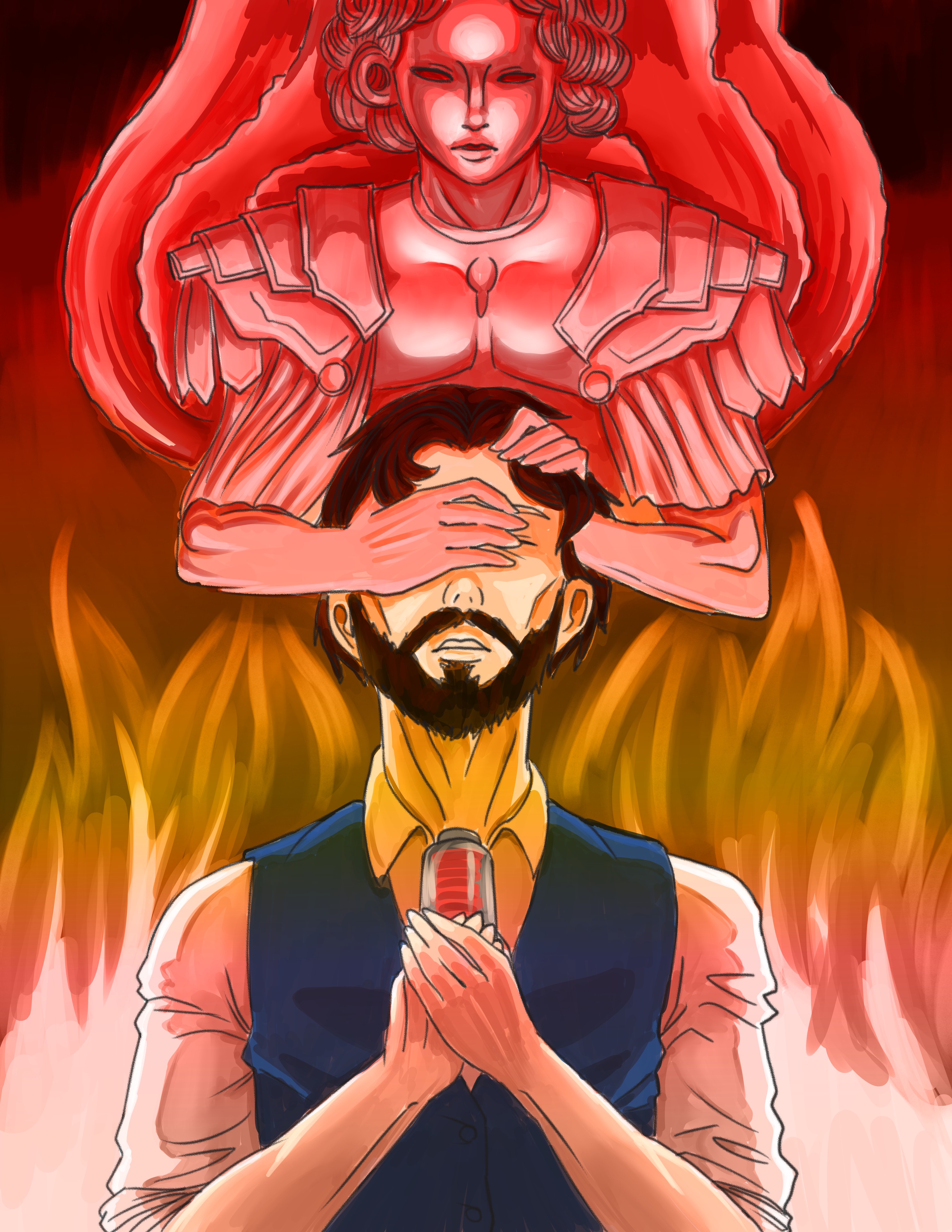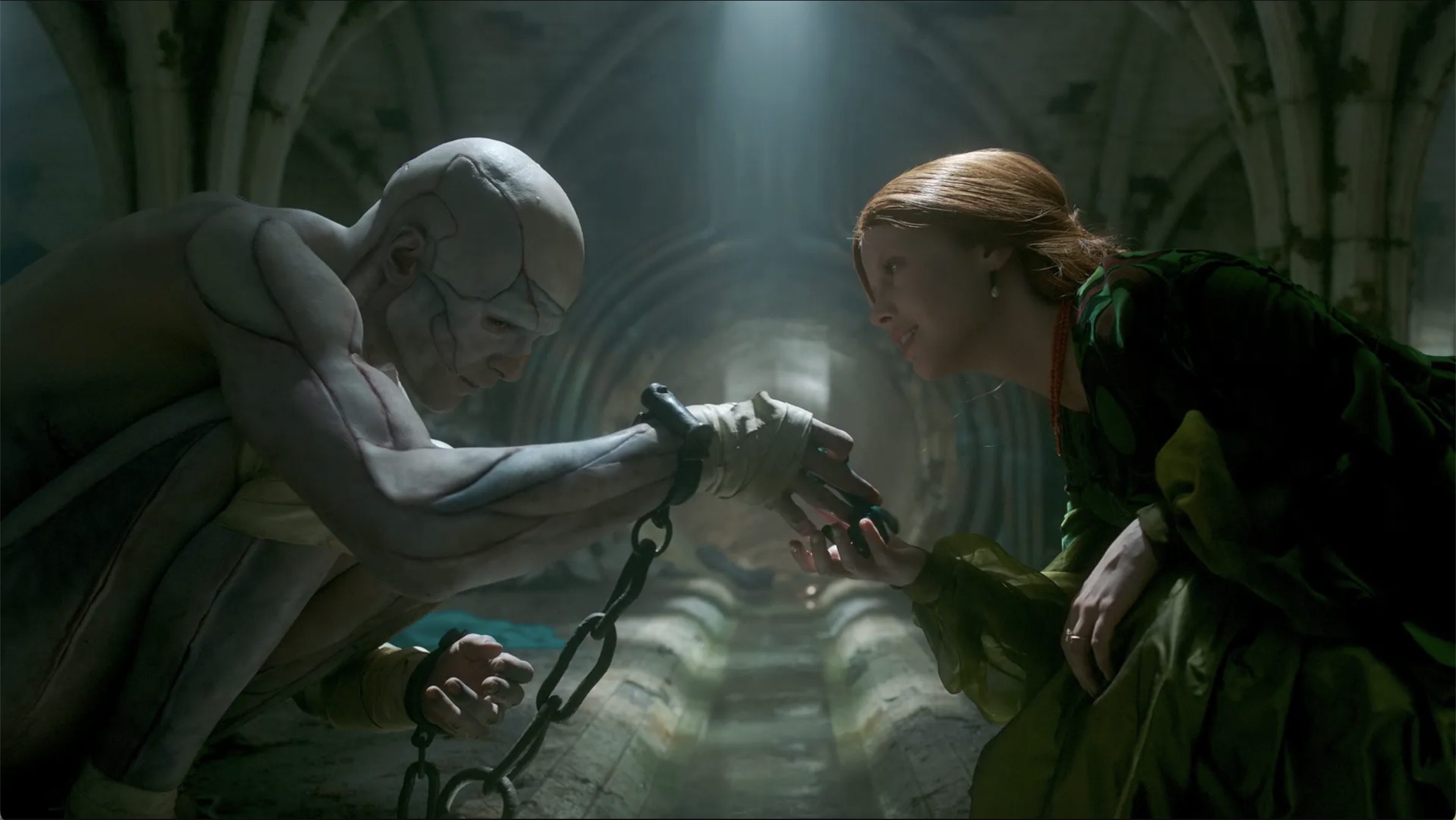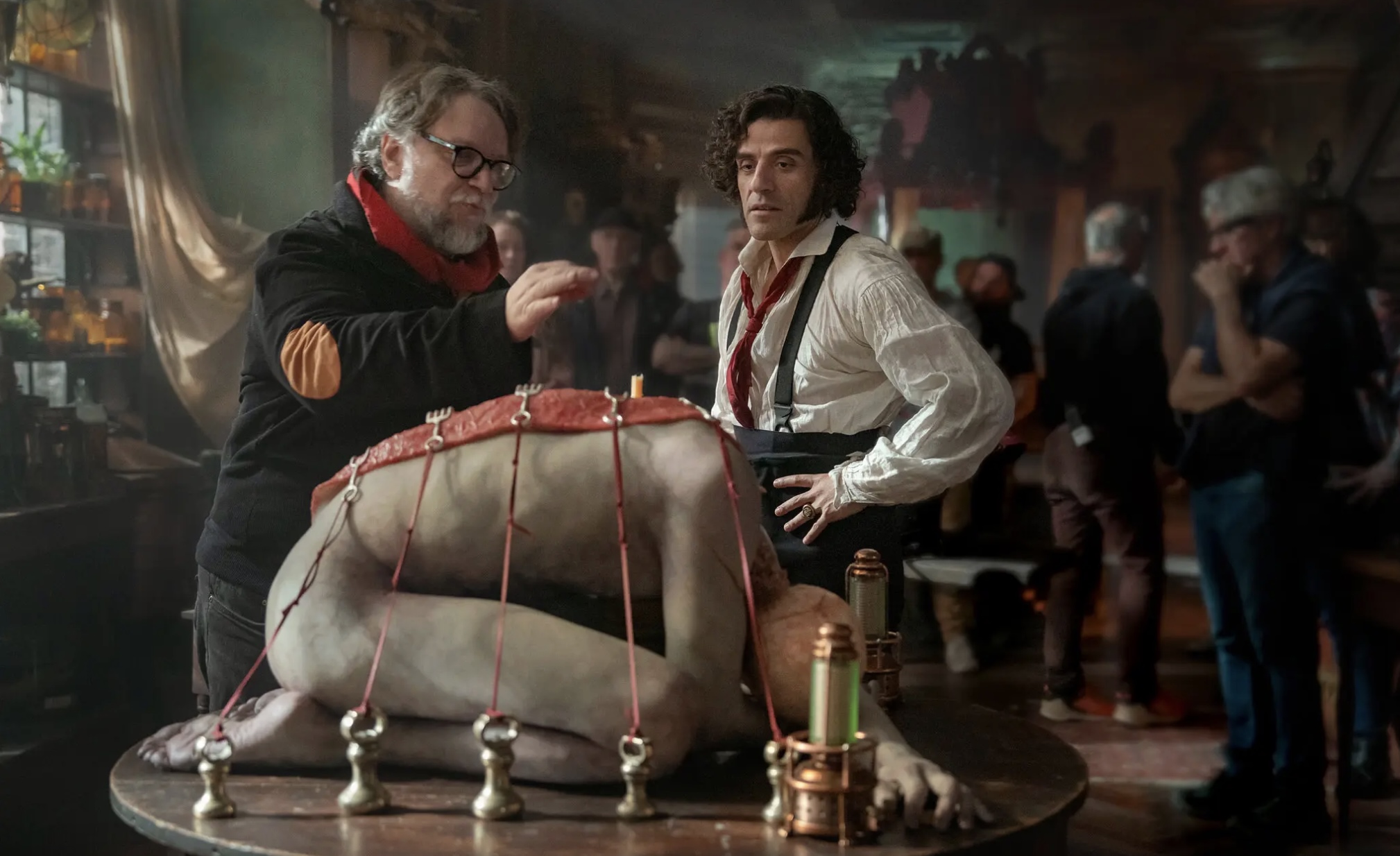Guillermo del Toro Revives “Frankenstein” Into A Modern-Day Classic

Victor Frankenstein haunted by the Angel of Death is a motif in the film "Frankenstein" (2025). Illustration by Youssef Daher
Mary Shelley published what is widely considered the first science fiction novel, “Frankenstein; or, The Modern Prometheus,” in 1818. Inspired by a nightmare she had, the story of an ambitious doctor pushing the boundaries of science too far is also considered one of the greatest Gothic novels of all time.
The novel has spawned numerous film adaptations, including the James Whale classics, “Frankenstein” (1931) and “Bride of Frankenstein” (1935), cementing these characters as icons of horror. Some sources estimate that there are over 400 cinematic adaptations of Frankenstein; however, none have paid as much homage to Mary Shelley’s original story as this year’s “Frankenstein” by Oscar-winning director Guillermo del Toro.
With a budget of $120 million, “Frankenstein” had a limited theater release on Oct. 17, before being made available for streaming on Netflix on Nov. 7.
Oscar Isaac (“Moon Knight,” “Ex Machina”) stars as the titular Victor Frankenstein. Mia Goth (“Pearl,” “X,” “MaXXXine”) plays Elizabeth Lavenza, Felix Kammerer (“All Quiet on the Western Front”) plays Victor’s younger brother, William, and Jacob Elordi (“Saltburn,” “Euphoria”) plays The Creature. Christoph Waltz (“Most Dangerous Game,” “Inglorious Bastards”) plays Henrich Harlander, a character created for the film.
Guillermo del Toro wrote the adapted screenplay, directed, and co-produced the film. The Mexican filmmaker is known for blending fantasy, mythology, and history to tell a haunting story with films like “Pan’s Labyrinth” (2006), “Shape of Water” (2017), and the stop-motion animated “Pinocchio” (2022). In an interview in The New York Times Magazine, del Toro shares how he has been inspired by Mary Shelley’s masterpiece since he was a child. Speaking with Maya Salam, del Toro said that he wondered about The Creature, “Why is it made of so many parts?”
While he does take several creative liberties, del Toro faithfully follows most of Shelley’s original story. Like the novel, the film begins with a team of Dutch sailors trying to free their boat, which has become frozen in the Arctic, in their attempt to reach the North Pole. They find an unconscious man on the frozen water and take him back to the boat. Soon after, a human-shaped creature in a black cloak who seemingly can’t die storms onto the ship. In an attempt to get to the man, the cloaked figure kills six men. After the cloaked figure falls into the Arctic ice, the ship captain asks the man they found where the creature came from. Victor Frankenstein then begins the story of how he created The Creature.
Viewers are taken back in time to a Scottish country estate in the Victorian era, where a young Frankenstein is strictly schooled by his father to become a medical doctor. After his mother dies giving birth to his brother, Victor becomes obsessed with trying to reverse death. Later in 1857, after being expelled from medical school for his work on reanimating a corpse, a wealthy financier, Henrich Harlander, approaches him and offers to fund his studies. With Harlander, del Toro adds interfamilial drama.
Harlander happens to be the uncle of William Frankenstein’s fiancée, Elizabeth. Harlander hosts Victor and his brother, William, whom Harlander has hired to manage the renovations to the castle that will become Victor’s laboratory. Through a series of coincidental encounters, del Toro creates the romantic tension between Elizabeth and Victor.
While the gothic romance part of the film may be a bit contrived, the film’s strongest elements are in its depiction of Victor’s obsessive creation of The Creature. With Harlander’s funding and resources, viewers watch as a shadowy abandoned castle turns into a glorious laboratory.
Victor’s search for specific body parts and limbs leads him to go to local battlefields, as the story is set during the Crimean War. Victor even resorts to examining bodies before public executions, looking for ideal specimens.
After months of work and puzzle piecing his creature together, Victor is ready to bring his creation to life. But on the night of the storm, he finds out that Harlander is dying of syphilis. Harlander then reveals what he wants in exchange for his funding.
Then, the most moving part of the film begins when The Creature tells his version of events.
The film is visually stunning. Del Toro blends his signature dream-like style with classic gothic horror, creating a darkly mythical atmosphere. The set design and costuming combine mid-nineteenth-century aesthetics with exaggerated, surreal features that make the story feel like a Grimm’s fairy tale.
The design of The Creature, while visually inspired by previous iterations, has its own unique and haunting design. The Creature is played deftly by Jacob Elordi. His physical acting when the creature is first brought to life invites nurturing sympathy for a helpless being trying to understand his existence. Later in the film, when he becomes more intelligent, Elordi delivers an award-worthy performance conveying The Creature with the manner and grace that would please fans of the original novel. The camera work is also worth noting. Del Toro used many cranes to create movement in the shots. Nothing in this film feels like it’s stuck in one place; it is always moving and flowing with elegance.
Oscar Issac plays the “mad scientist” with a nuance and earnestness that is rare to see in portrayals of Victor Frankenstein. Mia Goth gives a subtle performance as the kind, soft-spoken Elizabeth. Christoph Waltz’s Harlander helps add gravitas.
Guillermo del Toro’s “Frankenstein” revives Shelley’s novel with a fresh vision that honors the original. Its warning against the dangers of technological hubris is as timely as ever, as is its message of compassion for those who are born different.
“Frankenstein” is showing in select theaters and streaming on Netflix.



